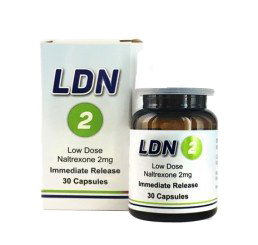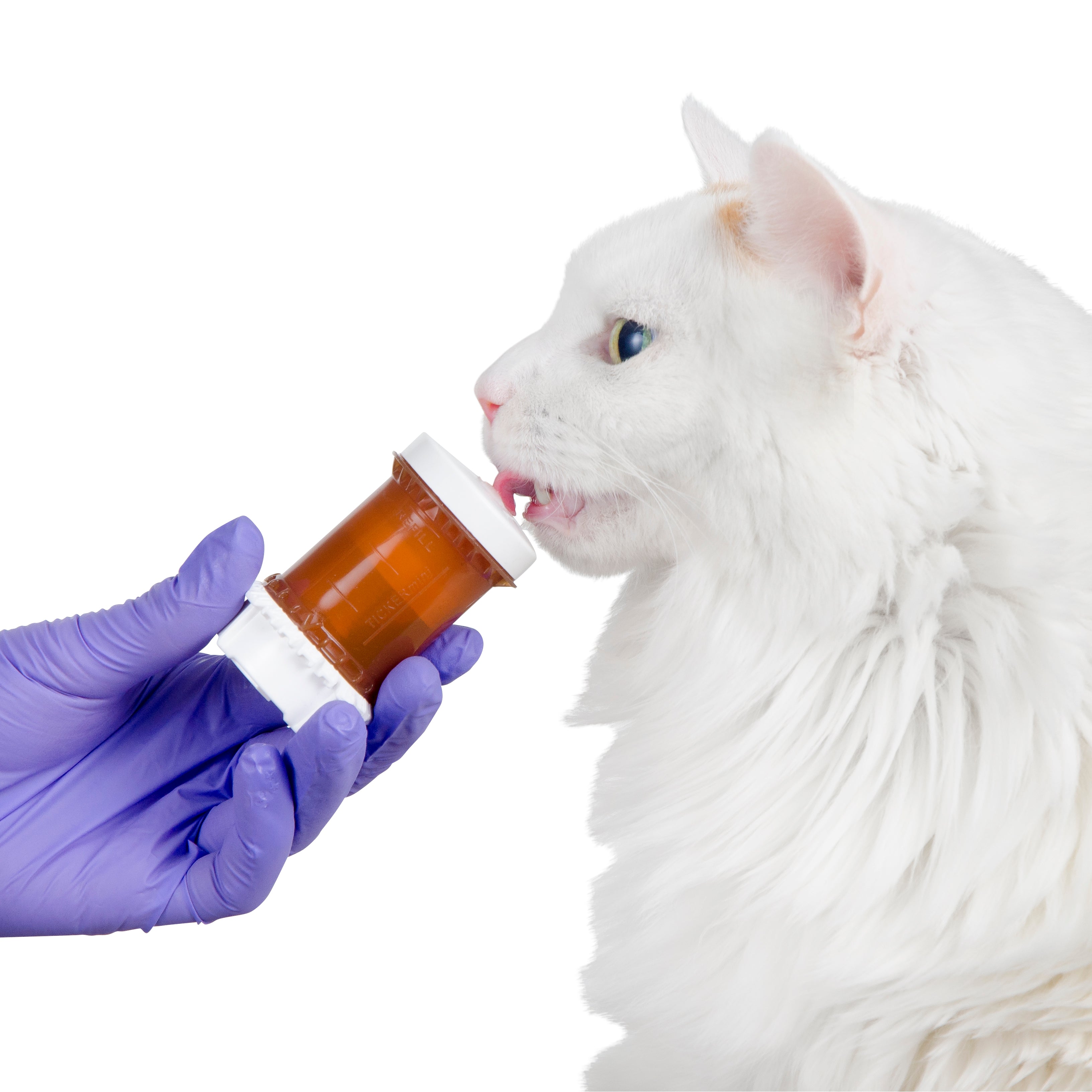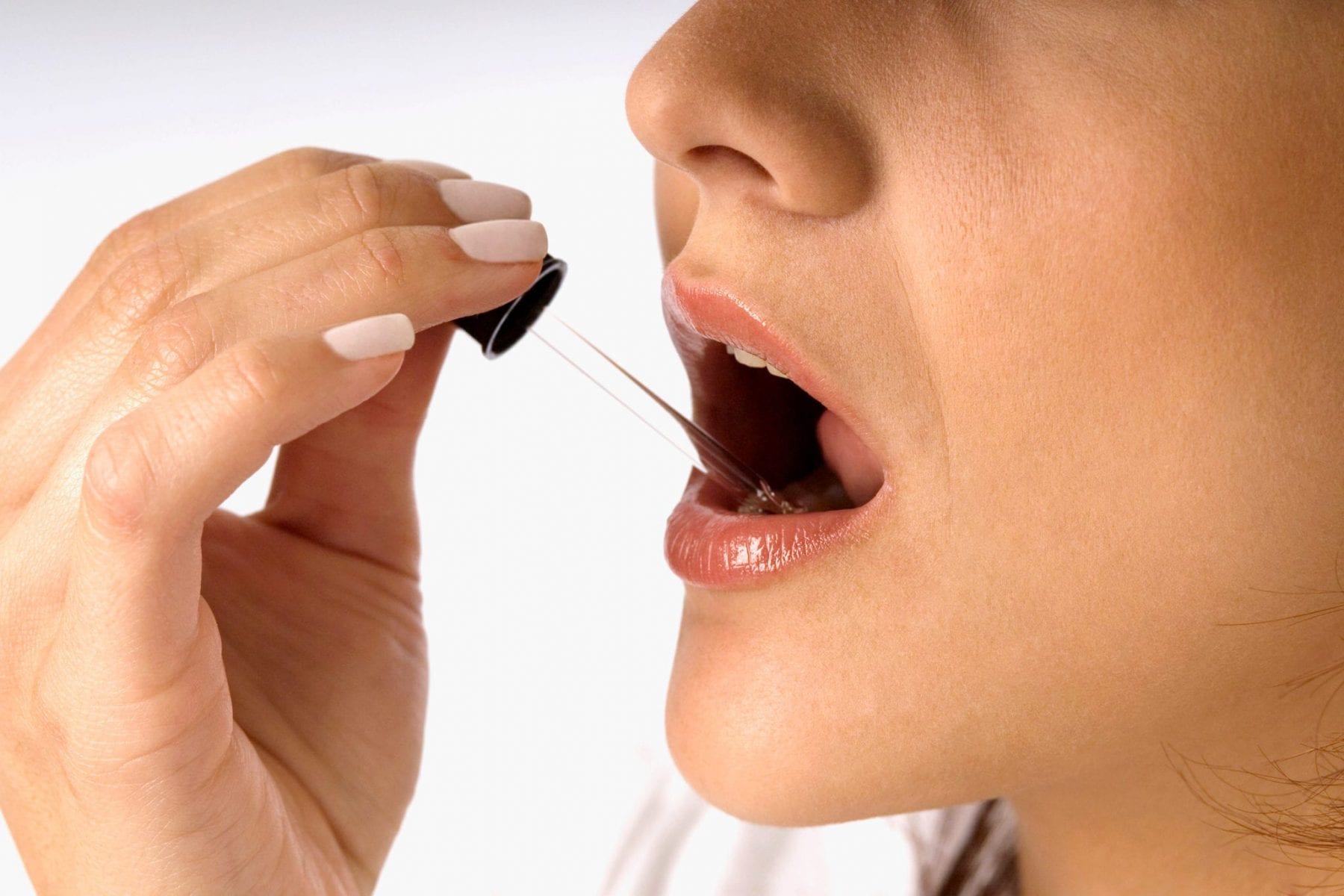Low-Dose Naltrexone
- 14 min reading time
Low-dose naltrexone seems like a miracle drug, but how does it really work? What's the best way to take it, and will it work for you? Dosing LDN can be tricky when taken as capsules, so if you want an easy way to start LDN, try taking troches! Our pharmacy wants to make it easy to treat your autoimmune disorder.

Naltrexone is an FDA-approved drug to treat alcoholism, opioid addiction, or dependence on other substances. [2] However, when naltrexone is prescribed at a lower dose (often called low-dose naltrexone, or LDN), it has been clinically shown to produce several therapeutic effects.
Low-Dose Naltrexone (LDN) is used to treat and regulate the immune system, ultimately providing relief to patients with autoimmune diseases and central nervous system (CNS) disorders. Specifically, LDN is commonly used to treat fibromyalgia, chronic fatigue syndrome, or rheumatoid arthritis. Other uses that have clinical evidence in treating and/or mitigating a variety of disease states are multiple sclerosis, Parkinson’s disease, fibromyalgia, ulcerative colitis, Crohn’s disease and chronic pain.
Many compounding pharmacies can compound LDN in the exact strength you need. Traditional naltrexone is prescribed at 50 mg, whereas LDN starts at 0.25 mg, and usually up to 6 mg (your doctor might prescribe it even higher depending on your specific needs). While normally given at a starter dose of 0.5 mg, patients typically titrate and fine-tune (slowly increase) their dose over the course of a few weeks or a month to avoid side effects.
How does naltrexone work?
Naltrexone has two isomers, which means it has two forms with the same chemical components but the molecules are arranged differently. The different arrangements produce different results in the body. The isomer names are dextro and levo, which are standard labels to differentiate isomers in chemistry.
Naltrexone as a dextro isomer can bind to nerve cells to produce analgesic (pain relieving) and neuroprotective effects (preserves neurons, or brain cells and nerves). [3] The levo form of naltrexone blocks the effects of opioids by binding to the receptors in our bodies, producing an additional release of endorphins and enkephalins.[4] The increase in endorphins promotes healing of cells, inhibits cellular growth, reduces inflammation and positively augments the immune system. Elevated levels of enkephalins can also have positive responses in the immune system. [5]
How is LDN dosed?
LDN is usually taken once or twice daily. Dosages usually start low, such as 0.5 mg or 1 mg, and patients slowly increase their dose to avoid negative side effects.[20] Over the course of several weeks, the dosage is raised from 1 mg, to 2 mg, and eventually to the maximum dosage, which is usually around 4.5 – 6 mg daily. Prescribers will monitor their patients’ symptoms and the effectiveness of the medication, especially as the medication regimen begins.
What forms or delivery methods are available for naltrexone?
There are a variety of delivery methods for naltrexone. Low dose naltrexone can be compounded as a liquid, capsules, suppositories, troche lozenges or creams. However, most physicians prescribe LDN as capsules or troches. Each dosage form has its own distinct advantages and disadvantages.
What are the differences in bioavailability from different drug forms?
When ingested as capsules, tablets, liquid or other oral dosage forms, 96% of naltrexone is absorbed within an hour. [9] However, the extremely acidic environment of the stomach can change the structure and stability of naltrexone. This in turn reduces the bioavailability (how much your body can actually use) and final efficacy of the drug. As LDN continues through the gastrointestinal tract, it is subjected to additional metabolism processes. The most important process that prevents the formation of active naltrexone in the body is called hepatic metabolism.[10] This process reduces naltrexone’s bioavailability between 5% – 40%, which prevents further therapeutic effects.[11] Overall, LDN is absorbed quickly, but at lower efficacy rates.
Naltrexone cream has been shown to convert into its active form with 1.1% bioavailability. [12] This is low compared to capsule or troche absorption rates. This low bioavailability could be due to the fat layer that needs to be permeated as a topical dosage form. Keep in mind that this low bioavailability is specific to LDN; other cream medications will have different absorption rates. Furthermore, absorption rates could vary on where patients apply their cream; areas with thicker layers of fat will have lower bioavailability than thin-skin areas.
Let’s look a little deeper into the other benefits of each dosage form, and see what could work best for you.

Naltrexone Cream
Some patients have difficulty swallowing or taking oral medications whether it’s due to nerve loss, stroke, dry mouth syndrome, or congenital conditions where the nerves in the throat may have been impaired. These and other such patients may benefit from using LDN through alternative routes of administration. The topical, or transdermal route might be a great option with a metered dose dispenser like TICKER® Topical Applicator to administer precise amounts of medication. Patients prescribed topical LDN just CLICK the dial to their adjusted dose.

Capsules
Traditionally, capsules are one of the most popular ways for doctors to prescribe LDN. Capsules typically have a longer beyond-use date (BUD, which is similar to an expiration date, but for compounded medications) due to their composition. This can be beneficial because most patients take LDN for prolonged periods of time, and possibly their entire life. However, all capsules are subject to the chemical breakdown that occurs in the regular digestive process, which ultimately can reduce efficacy.[6]
Additionally, when you start LDN, you’ll need to titrate their dosages upward. This can mean that the doctor has to write four different prescriptions for the pharmacy to fill, which can make the first month or so of LDN treatment costly and difficult to coordinate. An alternative to paying for three or four prescriptions can be to take an increasing amount of a lower-strength capsule. By the final dose, this method will entail taking nine capsules per dose (given a starter dose of 0.5 mg and a final dose of 4.5 mg).
Additionally, if the current dose is too high and you want to titrate back down, you can’t split a capsule, and would have to pick up a new prescription.

Troches
Troches are medicated lozenges that dissolve inside the mouth against the cheek or under the tongue. They’re designed to help patients who have trouble taking medication orally, need higher absorption rates, or want faster onsets of action. If swallowing medications is an issue for you, or if the medication is not providing the desired therapeutic effect, troches can provide a solution by dissolving directly in the oral buccal membrane. Perhaps the greatest benefit of troches is that once the troche has dissolved, the active ingredient(s) is absorbed directly into the blood stream for one of the fastest delivery methods possible. [6]
LDN troches are generally placed between the inner cheeks and gums. It is recommended not to move them excessively around the oral cavity, or to swallow them as they dissolve. Moving the troche can increase saliva production, which mean the medication is more likely to be swallowed instead of absorbed in the buccal membrane. Swallowing troches, or saliva as troches dissolve, will subject the swallowed medication to lower absorption rates, similar to troches.
Troches’ placement should be alternated with each use for better absorption.

What are the benefits when taking naltrexone as a troche?
The buccal area is a relatively small area (40 cm2) located inside the mouth.[7] The buccal area is ideal for absorption because it is rich in blood and lymphatic vessels. This blood supply system allows for rapid systemic absorption of medication. This provides faster therapeutic effects compared to oral or topical dosage routes. Because this delivery route avoids the digestive tract, medications given as a troche will avoid the presystemic gut wall metabolism or decomposition in the gastrointestinal tract [16]. Essentially, troches are more quickly absorbed with better absorption rates than capsules.
How to use a LDN troche?
Place the troche in the back of your mouth between the teeth and gums. Allow the troche to fully dissolve for complete absorption of the medication. This process can take fifteen minutes for smaller troches to completely melt, but can be more than half an hour for larger troches. Absorption time will also vary depending on which troche base (inactive ingredient that holds the shape of the troche) your pharmacy chooses. Avoid eating, drinking or brushing your teeth for thirty minutes after using the troche. To prevent any possible irritation, rotate troche in different areas of your mouth with each use.

How to titrate LDN troches to my final daily dosage?
Another problem that LDN troches can solve is how to titrate dosage. Most, if not all troches are scored for easy cutting. The more scores a troche has, the more it can be cut. If a troche is scored once it can be cut in half. If a troche is scored three times, it can easily be cut in quarters. For example, a 4 mg troche can be divided into 1, 2, 3 or 4 mg of LDN; however much is needed, you’ll always only have to cut the troche once. Once you have reached the final desired dose, you can take one complete troche.
Having a small piece of troche is also beneficial because smaller troches are absorbed faster, which means the medication gets into your blood stream faster. The faster the medication gets into the blood stream, the faster you can have the desired effect.

What are the disadvantages of taking naltrexone as a troche?
One of the main disadvantages of troches is the variability in efficacy troches have for different patients. However, all dosage forms have absorption variability from patient to patient. Specifically, troches can have varying absorption rates due to saliva flow (if there is excess saliva present while the troche is dissolving, patients are at greater risk of swallowing the medication and losing some of the bioavailability due to the metabolism process), or enzymes present within the individual patient’s oral tract. {19}
Some patients may also experience more or less absorption due to troche disintegration rates (different troche bases may affect how it dissolves or disintegrates in the mouth). Even though there are variable efficacies among patients, it has been statistically shown among many studies that there are increased benefits to using troches over tablets or capsules.

What are the possible side effects of taking LDN?
Patients who start LDN can experience little to no side effects at all. However, some patients do experience side effects. Patients that take LDN at night can experience sleep disturbances, such as vivid dreams or insomnia. This could be due to the possible of endorphin release. [21] You should contact your pharmacist or doctor if you experience this side effect. Healthcare practitioners can adjust dosing habits, and perhaps recommend that you take LDN at a different time of day.
Less common side effects are are elevated T-Lymphocytes, gastrointestinal disturbances, nausea or vomiting, mild headaches, and dry mouth. These symptoms may be more common as the LDN regimen starts and patients are titrating their dosage upward. It may be a sign that the dose needs to be brought back down. As always, you need to check with your doctor or pharmacist before changing how you take medication.
Can I take naltrexone with alcohol?
Because naltrexone is indicated for treatment of alcohol dependence, it is not recommended to drink alcohol while taking LDN. [22]
Can I take LDN at the same time as opioids?
 No, you cannot take LDN with opioids. Opioid withdrawal can be further exacerbated when patients are still taking opioids within a 7 to 10 day period prior to initiating naltrexone [23]. The reason behind the opioid withdrawal period is due to naltrexone acting as a reversible competitive antagonist and displace opioids from the opioid receptor. This abrupt interaction prevents patients from receiving the normal therapeutic dose of opioid, leading to the shock symptoms patients experience.
No, you cannot take LDN with opioids. Opioid withdrawal can be further exacerbated when patients are still taking opioids within a 7 to 10 day period prior to initiating naltrexone [23]. The reason behind the opioid withdrawal period is due to naltrexone acting as a reversible competitive antagonist and displace opioids from the opioid receptor. This abrupt interaction prevents patients from receiving the normal therapeutic dose of opioid, leading to the shock symptoms patients experience.
You always need to tell your pharmacist which other medications you are taking before starting a new medication. Be honest with how much you are taking; our pharmacists are here to help, not judge.
How do I store troches?
Most troches are stored at room temperature with no direct light.[22] However, our pharmacist generally recommends to store most troches in a controlled environment such as the refrigerator. [23]
What do I do if I forget to refrigerate troches?
Troches stored outside of the refrigerator and within room temperature ranges can still maintain their potency, depending on the medication. When heat-sensitive medications are left out, they can be exposed to indirect heat which can cause physical changes of the medication. However, LDN troches do not usually undergo chemical changes at room temperature. Most often, LDN troches will develop a malleable texture if left out too long, causing them to stick and possibly melt on nearby troches. Call our pharmacist if this happens to your prescription.
What can I do without a prescription?
If you're waiting to receive a prescription, or just want to look into over the counter products that can help alleviate the symptoms you're experiencing, Folsom Medical Pharmacy provides a variety of anti-inflammatory vitamins and dietary supplements that can help.
Can low-dose naltrexone work for me?
If you have the symptoms or disease states addressed above, or have any reason to believe that you can benefit from LDN, please contact your physician or healthcare provider. Detail your interest, and explain how LDN troches can be of value to your health. If you need a new healthcare provider, or your current provider is not familiar with low-dose naltrexone, our pharmacy can refer you to a practitioner with experience with LDN. We also made a flyer you can show your provider that describes the advantages of troches, and quickly details how to dose LDN:

Folsom Medical Pharmacy serves patients throughout California. We typically ship prescriptions with twenty-four hours of receipt. Our pharmacy almost exclusively makes LDN as triple-scored troches, and can flavor them to your taste. Our compounding team has more than three decades of experience; we look forward to working toward your health.




